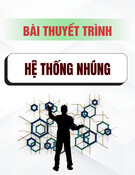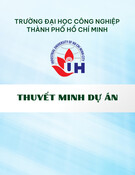
SỐ 79 (08-2024)
KHOA HỌC - CÔNG NGHỆ
47
TẠP CHÍ ISSN: 1859-316X
KHOA HỌC CÔNG NGHỆ HÀNG HẢI
JOURNAL OF MARINE SCIENCE AND TECHNOLOGY
ULTRA WIDE-BAND RADAR FOR THE REAL-TIME MONITORING
OF HEART RATE USING CONVOLUTIONAL NEURAL NETWORK
ỨNG DỤNG MẠNG NƠ RON TÍCH CHẬP CHO HỆ THỐNG THEO DÕI NHỊP TIM
THEO THỜI GIAN THỰC SỬ DỤNG RA ĐA BĂNG THÔNG SIÊU RỘNG
LE DANG KHANH
Faculty of Engineering, Vietnam Maritime University
Email: ledangkhanh@vimaru.edu.vn
Abstract
Ultra-wideband (UWB) radars are getting much
attention for maritime applications of smart and
luxury ships in which UWB radar could be
integrated into Bridge Navigational Watch &
Alarm System - BNWAS. One of the interesting
applications of UWB radar is vital signs
measurement, which is a contactless method. UWB
radar measures respiration and heartbeat rate by
the motion of thorax for detecting and checking the
state of people on the bridge. However, the motion
of the thorax caused by the heartbeat is usually low
intensity and easily gets noisy and perturbed by a
non-stationary signal. Due to this, an architecture
built by a convolutional neural network is
developed and modified to monitor heart rate using
a contactless ultra wide-band (UWB) radar. The
preprocessing part including many steps is
necessary to clean raw signals from UWB radar. In
this study, the evaluation metrics included a root
mean square error of 11.34, a mean absolute error
of 8.98, a standard deviation of the estimated signal
of 4.05, and a percentage error of average HR at
5.77%. The proposed model could capture HR and
is expected to be used for monitoring health and
psychological status.
Keywords: Vital sign, UWB radar, heart-rate
monitoring, convolutional neural network, Real-
time monitoring.
Tóm tắt
Các radar băng thông siêu rộng (UWB) đang nhận
được nhiều sự quan tâm đối với các ứng dụng hàng
hải trên các tàu thông minh và tàu hạng sang, trong
đó radar UWB có thể được tích hợp vào Hệ thống
cảnh báo và giám sát cầu dẫn đường - BNWAS. Một
trong những ứng dụng thú vị của radar UWB là đo
các tín hiệu sống, đây là phương pháp không tiếp
xúc. Radar UWB đo nhịp thở và nhịp tim bằng
chuyển động của lồng ngực để phát hiện và kiểm
tra trạng thái của người trong ca trực. Tuy nhiên,
chuyển động của lồng ngực do nhịp tim gây ra
thường có cường độ thấp và dễ bị nhiễu và nhiễu
loạn bởi tín hiệu không cố định. Do đó, một thuật
toán được phát triển dựa trên mạng nơ ron tích
chập để theo dõi nhịp tim không tiếp xúc bằng
radar băng thông siêu rộng (UWB). Phần tiền xử
lý bao gồm nhiều bước cần thiết để xử lý tín hiệu
thô từ radar UWB. Trong nghiên cứu này, các số
liệu đánh giá bao gồm sai số bình phương trung
bình gốc là 11,34, sai số tuyệt đối trung bình là
8,98, độ lệch chuẩn của tín hiệu ước tính là 4,05 và
sai số phần trăm của HR trung bình là 5,77%. Mô
hình đề xuất có thể đo được nhịp tim và phục vụ cho
công tác theo dõi tình trạng sức khoẻ, tâm lý của
người được theo dõi.
Từ khóa: Tín hiệu sống, radar UWB, Giám sát
nhịp tim, Mạng nơ ron tích chập, Giám sát thời
gian thực.
Abbreviations
HR
Heart-rate
UWB
Ultra wide-band
CNN
Convolutional neural network
RMSE
Root mean square error
MAE
Mean absolute error
PPG
Photoplethysmography
1. Introduction
The UWB radar has recently been used in indoor
applications in smart homes, or smart cities due to its
advantages. A UWB radar has low power
consumption, and simple architecture, but provides
rich information about the spatial environment and
high resolution. Therefore, it is widely used in indoor
applications such as driver safety assistant [1], people
counting [2, 3], through wall human detection [4].
Besides, UWB radar is very sensitive in that it can
measure the tiny motion from thorax in the breathing
and cardiac activities, so it can monitor HR.

KHOA HỌC - CÔNG NGHỆ
48
SỐ 79 (08-2024)
TẠP CHÍ ISSN: 1859-316X
KHOA HỌC CÔNG NGHỆ HÀNG HẢI
JOURNAL OF MARINE SCIENCE AND TECHNOLOGY
Many methods have been published to track the
HR. For example, a CNN model was used to monitor
vital signs, including HR and respiration rate, based
on impulse radio ultrawide-band radar during sleep
[5]. The paper provides a method of using both radar
signals and applying a continuous wavelet transform
to have information about the time domain to monitor
HR for a long period. The model includes two parts,
one is 1D CNN to learn the radar signal and the other
is 2D CNN to capture information of continuous
wavelet transform signal. The average MAE for
respiration rate and HR are 2.67 and 4.78. Although
the method could monitor both respiration rate and
HR, its result in monitoring HR has sections in which
the MAE was larger than the HR estimated.
In this work, a much simpler architecture of the
CNN model was developed to estimate HR. In this
study, we aim to get more information by taking
several consecutive signals concerning fast time as the
input instead of only one signal with the richest
information. The preprocessing part included band-
pass filtering, frame stacking, clutter removal, person
detection, and min-max normalization to have a better
dataset for the model. The CNN architecture used a
1D convolutional layer as the core.
2. Methods
2.1. Experimental set-up
A UWB radar in front of a person’s heart, and a
PPG, which was treated as a ground truth signal, were
used to collect vital signs simultaneously, as shown in
Figure 1.
In this paper, we use UWB radar produced by
UMAIN company with a center frequency of 4.6 GHz
and bandwidth 500 MHz, with the setting of sampling
rate FS of 44.5 frame/second. The UWB radar is
placed on the table which is 1m away from the person.
2.2. Data collection and preprocessing
There were 18 people taking part in collecting data
with both male and female participants. To have a
reliable result, consider the data of 14 people as a
training dataset, and the rest as the valid dataset. After
this, the raw dataset was created, and were able to
move on to the preprocessing part, as shown in Figure
2. To preprocess the raw signal, firstly, apply the band-
pass filter, with a range of frequency between 0.01Hz
and 5Hz, which can capture heart rate as the normal
frequency of heart rate is equivalent to 0.6Hz to 2Hz.
Then, to provide more information and increase
stability, the dataset is stacked in a window size of 128
signals, with a sliding step of 11 frames. Next is to
remove clutter by applying a median filter and
detecting the distance of a person in front of the UWB
radar by finding the index of the highest standard
deviation between data points concerning fast time.
After that, the input radar signal of the model is
defined as the 1D signal, with a window size, of 128,
times the range around the highest standard deviation
index, in this paper, it is set at 30. So, each radar
sample has a size of 128×30 corresponding to 6.4s ×
600mm. And the last step, to increase the training
speed and the stability of the model and keep the
signal shape, apply min-max normalization. About the
label dataset, the signal received from PPG in the time
domain is converted into beat per minute domain by
applying Chirp Z-transform [5].
2.3. CNN model
A Convolutional Neural Network (CNN) represents
a specialized type of deep learning architecture
commonly employed in the field of Computer Vision.
Computer vision, a subdomain of Artificial Intelligence,
empowers computers to comprehend and interpret
visual data, including images.
Figure 1. Experimental set-up
Figure 2. Preprocessing steps

KHOA HỌC - CÔNG NGHỆ
49
SỐ 79 (08-2024)
TẠP CHÍ ISSN: 1859-316X
KHOA HỌC CÔNG NGHỆ HÀNG HẢI
JOURNAL OF MARINE SCIENCE AND TECHNOLOGY
In the realm of Machine Learning, Artificial Neural
Networks exhibit impressive performance. These
networks find application across diverse datasets,
encompassing images, audio, and text. Depending on
the specific task, different types of neural networks are
employed. For instance, when predicting word
sequences, Recurrent Neural Networks (RNNs)-
particularly Long Short-Term Memory (LSTM)
networks-are commonly used. Similarly, for image
classification tasks, Convolutional Neural Networks
(CNNs) are the go-to choice.
In a regular Neural Network there are three types
of layers:
- Input Layers: These layers receive input data for
our model. The number of neurons in this layer
corresponds to the total number of features in our
dataset (e.g., the number of pixels in an image).
- Hidden Layers: The input from the Input layer is
subsequently fed into the hidden layers. Depending on
our model and data size, there can be multiple hidden
layers. Each hidden layer may contain varying
numbers of neurons, typically exceeding the number
of input features. The output from each hidden layer
is computed through matrix multiplication with
learnable weights specific to that layer. Additionally,
learnable biases are added, followed by an activation
function. This nonlinearity introduced by the
activation function is crucial for the network’s
expressive power.
- Output Layer: The output from the hidden layers
is then directed to a logistic function, such as the
sigmoid or softmax function. These functions convert
the raw output values for each class into probability
scores, facilitating classification decisions.
In this research, we will investigate into
constructing a fundamental building block for CNNs.
There are many changes in the number of CNN blocks,
filter size, and segment window size, and the best
performance was applied. Figure 3 depicts the general
block diagram of the network. There are three CNN
blocks, each block has a sequence of 2 convolutional
layers (painted blue), 2 batch normalize layers, 2
ReLU activation layers, max pooling layer, except for
the last block, which uses the average pooling layer
instead. The 2 convolutional layers use the same
number of filters, and after each block, that number
doubles, from 16 to 64, consequently. The reason for
that is to let the convolutional layer learn the features
as much as possible before down sampling the dataset;
and as moving forward in CNN blocks, the layer
needs to capture more complex patterns, and as many
patterns as possible. Each convolutional layer
contains the regularization to help prevent overfitting.
A batch-normalized layer is used in each block to
increase the training speed and the stability of the
model.
2.4. Results
Table 1 shows the evaluation metrics of models,
including Root Mean Square Error (RMSE), and
Mean Absolute Error (MAE), the gap between the
ground truth signal and the estimated signal of HR
from the valid dataset is shown in percentage and
standard deviation (Std).
Evaluation metric formulas:
RMSE:
√1
𝑛∑(𝑦𝑖−𝑦𝑖)2
𝑛
𝑖=1
(1)
Figure 3. CNN model. Where the 1D CNN layer uses a kernel size of 3, BN is batch normalization, ReLU is the
activation layer; the last 1D CNN block uses Average Pooling instead of Max Pooling as shown

KHOA HỌC - CÔNG NGHỆ
50
SỐ 79 (08-2024)
TẠP CHÍ ISSN: 1859-316X
KHOA HỌC CÔNG NGHỆ HÀNG HẢI
JOURNAL OF MARINE SCIENCE AND TECHNOLOGY
MAE: 1
𝑛∑|𝑦𝑖−𝑦𝑖|
𝑛
𝑖=1
(2)
Std:
√1
𝑛∑(𝑥𝑖−1
𝑛∑𝑥𝑗
𝑛
𝑗=1 )2
𝑛
𝑖=1
(3)
Percentage:
∑ |𝑦𝑖−𝑦𝑖|
𝑛
𝑖=1
∑𝑦𝑗
𝑛
𝑗=1
(4)
where 𝑦 is ground truth signal; 𝑦 is the estimated signal;
and 𝑥=|𝑦−𝑦|.
Compared to the proposed model, which has 3
CNN blocks, if the number of CNN block is increased
to 4, all the evaluation values are higher, which
depicts worse result. On the other hand, lower the
number of filters or the number of convolutional layer
of each CNN block may result some better values of
evaluation metrics (values of RMSE, MAE of the
model near the last row are 10.37 and 8.14, compared
to 11.34 and 8.98 of proposed model). However, due
to the lack of parameters, the model has less ability to
track HR, which results less reliable prediction.
Generally, increasing the number of blocks or the
starting number of filters will increase the error or
overfitting where decreasing them can cause
underfitting.
Figure 4 depicts the ground truth and estimated
HR. Basically, the HR prediction does follow the
general trend of the ground truth signal. There are
various points that depict the gap between the
estimated signal and the ground truth signal. This
could be due to the noise when using PPG (user does
move his hand for a while), and the limitations
model’s ability to track the sudden change in HR.
3. Conclusion
Heart rate (HR), a fundamental physiological
parameter, plays a crucial role in assessing overall
health and monitoring disease progression. In pursuit
of non-invasive and efficient heart rate monitoring, an
innovative architecture leveraging a convolutional
neural network (CNN) has been meticulously
designed and adapted for use with a contactless ultra-
wideband (UWB) radar. The UWB radar captures raw
signals, necessitating a comprehensive preprocessing
pipeline to enhance signal quality.
In this study, we focus on extracting valuable
insights by analyzing consecutive signals within a
short time frame. These sequential signals serve as
input to the CNN model, which robustly estimates
heart rate. The evaluation of our model reveals
promising performance metrics:
- RMSE: Achieving an RMSE of 11.34, our model
demonstrates accurate estimation.
- MAE: With an MAE of 8.98, our approach
minimizes deviations from ground truth.
- Std: The estimated signal exhibits stability, with
a standard deviation of 4.05.
- Percentage Error of Average HR: Our model
Table 1. Evaluation metrics
RMSE
MAE
Std
Percentage
Proposed model
11.34
8.98
4.05
5.77%
4 blocks, 16 filters start
13.98
11.51
8.87
5.78%
4 blocks, 1 conv layer each block, 16 filters start
11.90
9.59
7.13
5.98%
3 blocks, 32 filters start
14.59
11.93
7.17
11.07%
3 blocks, 1 conv layer each block, 16 filters start
10.37
8.14
4.70
5.99%
3 blocks, 1 conv layer each block, 32 filters start
11.84
9.46
6.22
4.53%
where 1 conv layer each block, only one combination of conv layer, BN, ReLU is used; filter start, the starting number of
filter; RMSE, root mean square error; MAE, mean absolute error; std, standard deviation of estimated signal;
percentage, error between average HR value of ground truth signal and estimated signal.
Figure 4. The result for valid signal

KHOA HỌC - CÔNG NGHỆ
51
SỐ 79 (08-2024)
TẠP CHÍ ISSN: 1859-316X
KHOA HỌC CÔNG NGHỆ HÀNG HẢI
JOURNAL OF MARINE SCIENCE AND TECHNOLOGY
maintains precision, with an average heart rate
percentage error of 5.77%.
The proposed CNN-based framework effectively
captures heart rate dynamics and holds promise for
practical applications in health monitoring. Its
potential deployment in clinical settings could
revolutionize disease management and enhance
patient care.
Acknowledgment
This research is funded by Vietnam Maritime
University under grant number: DT23-24.16.
REFERENCES
[1] Zhao, P, Lu, CX, Wang, J, Chen, C, Wang, W,
Trigoni, N & Markham (2021), Human tracking
and identification through a millimeter wave radar,
Ad Hoc Networks, Vol.116, 102475.
[2] Kyou-Kai Shyu, Luan-Jiau Chiu, Po-Lei Lee, Tzu-
Han Tung (2018), Detection of Breathing and
Heart Rates in UWB Radar Sensor Data using
FVPIEF Based Two-Layer EEMD, IEEE Sensors
Journal PP (99):1-1.
[3] Y. Zhang, X. Li, R. Qi, Z. Qi, and H. Zhu (2020),
Harmonic Multiple Loop Detection (HMLD)
Algorithm for Not-Contact Vital Sign Monitoring
Based on Ultra-Wideband (UWB) Radar, in IEEE
Access, Vol. 8, pp.38786-38793.
[4] Choi, S.H.; Yoon, H (2023). Convolutional Neural
Networks for the Real-Time Monitoring of Vital
Signs Based on Impulse Radio Ultrawide-Band
Radar during Sleep. Sensors, Vol. 23 (6), 3116.
https://doi.org/10.3390/s23063116.
[5] M. Le, V. S. Luong, K. Dang Nguyen, T. D. Le
and D. -K. Le (2023), Multivariate Signal
Decomposition for Vital Signal Extraction using
UWB Impulse Radar, 2023 IEEE Statistical
Signal Processing Workshop (SSP), Hanoi,
Vietnam, pp.290-294.
doi: 10.1109/SSP53291.2023.10208009.
Received: 03 April 2024
Revised: 12 April 2024
Accepted: 16 April 2024


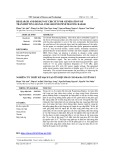
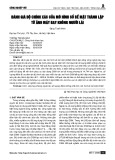
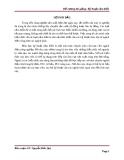
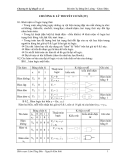


![Giáo trình kỹ thuật cảm biến: Bài 2 [Chi tiết]](https://cdn.tailieu.vn/images/document/thumbnail/2011/20110712/suatuoi_vinamilk/135x160/pages_from_giao_trinh_cam_bien_moi_3_4999.jpg)
![Giáo trình kỹ thuật cảm biến: Mở đầu [Chuẩn Nhất]](https://cdn.tailieu.vn/images/document/thumbnail/2011/20110712/suatuoi_vinamilk/135x160/pages_from_giao_trinh_cam_bien_moi_1_072.jpg)


![Đề cương đề tài nghiên cứu khoa học [chuẩn nhất/mới nhất]](https://cdn.tailieu.vn/images/document/thumbnail/2025/20251117/duong297/135x160/26111763433948.jpg)










